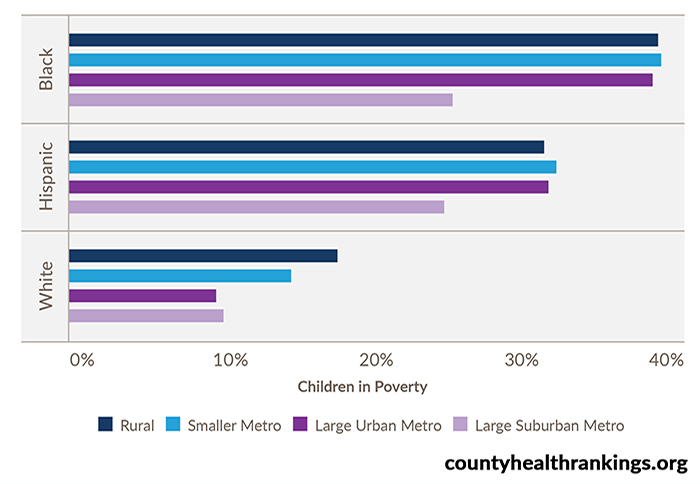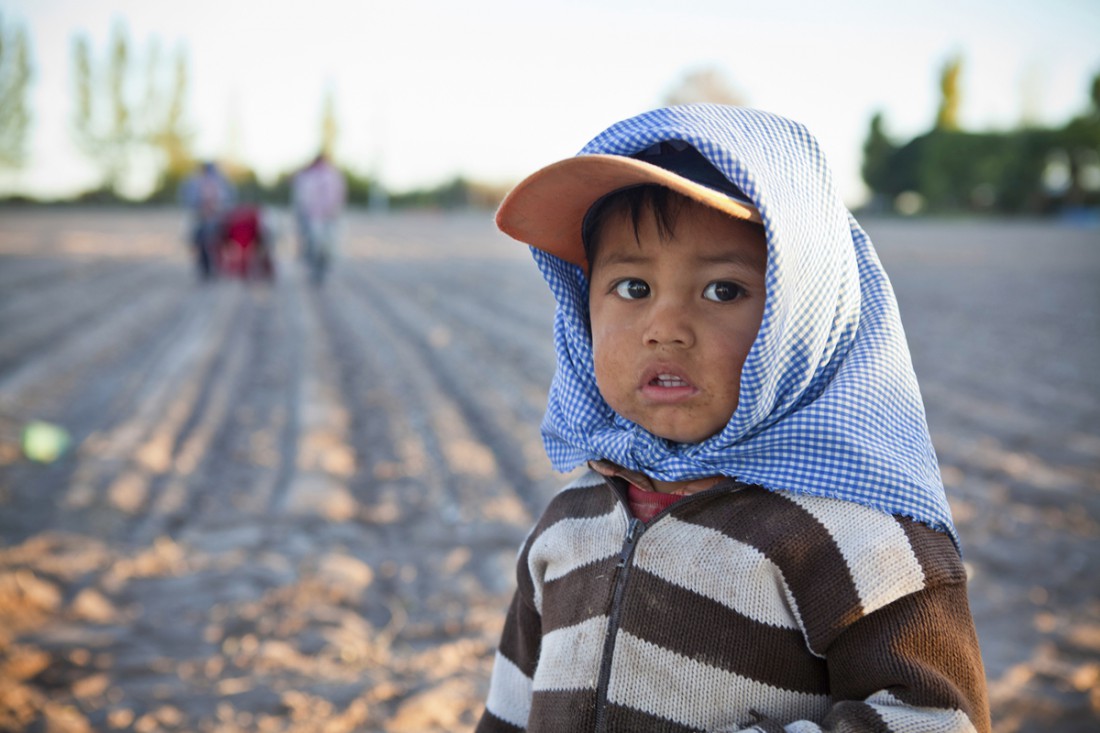By Cliff Despres
Salud America
Latino and other minority youth have higher rates of poverty and greater gaps in education and health opportunity than their white peers, according to a new report.
The 2018 County Health Rankings found that:
 Poverty rates among children and youth are at least 1.5 times higher than rates among adults aged 18 and older, and the rates are even higher for Latino, Black, and American Indian/Alaskan Native children and youth. Child poverty rates for Latino and Black children are worse across all types of counties, and are even higher in suburban counties than for White children in rural counties.
Poverty rates among children and youth are at least 1.5 times higher than rates among adults aged 18 and older, and the rates are even higher for Latino, Black, and American Indian/Alaskan Native children and youth. Child poverty rates for Latino and Black children are worse across all types of counties, and are even higher in suburban counties than for White children in rural counties.- More than 1 out of every 5 youth in the bottom performing counties do not graduate from high school in four years. It’s worse among racial/ethnic groups. 1 out of 4 Latino youth do not graduate from high school in four years.
- Latino and other minority youth are more affected by levels of residential segregation than White residents. Minority residents in more segregated areas face greater barriers to health and opportunity than White residents, with higher rates of child poverty, low birth weight, lower high school graduation rates, according to the new rankings.
- Latino adults experienced high rates of unemployment (6%). This rate is slightly better than that of American Indian/Alaskan Native and Black adults (10.5% and 9.9%, respectively), but worse than White and Asian adults (4.2% and 3.5%, respectively).
- American Indian/Alaskan Native (34.3 per 1,000), Latino (31.9 per 1,000), and Black (28.1 per 1,000) teens consistently have birth rates twice as high as White or Asian teens.
Read more about these key findings here.
“Every community should use their County Health Rankings data, work together, and find solutions so that all babies, kids, and adults – regardless of their race or ethnicity – have the same opportunities to be healthy,” said Dr. Richard Besser, president and CEO of the Robert Wood Johnson Foundation (RWJF). “We can’t be a healthy, thriving nation if we continue to leave entire communities and populations behind.”
The County Health Rankings & Roadmaps, published each year by RWJF and the University of Wisconsin Population Health Institute (UWPHI), compares counties within each state on more than 30 health-influencing factors such as education, jobs, and access to quality health care. You can look up your own county’s rank here: http://www.countyhealthrankings.org/.
A Call to Action
Communities can take action to help children and youth gain a foothold on the economic ladder and prepare them to become our future leaders, according to the new County Health Rankings report.
Actions include:
- Invest in education from early childhood through adulthood (i.e., universal pre-kindergarten or career and technical education).
- Increase or supplement income and support asset development in low-income households through expanded earned income tax credits, paid leave, or unemployment insurance.
- Ensure that everyone has adequate, affordable health care coverage and receives culturally competent services and care by integrating social and behavioral services, increasing accessibility through community health workers and school-based health centers, and training health care professionals on cultural diversity.
- Foster social connections within communities, and cultivate empowered and civically engaged youth through leadership development.
“The time is now to address long-standing challenges like child poverty and residential segregation,” said Dr. Julie Willems Van Dijk, director of County Health Rankings & Roadmaps. “This year’s Rankings are a call to action to see how these persistent health gaps play out locally, take an honest look at their root causes, and work together to give everyone a fair shot at a healthier life.”
See what’s happening in Latino communities to improve early childhood development. See what’s happening in Latino communities to drive advances in housing, income, and education among Latino families!



